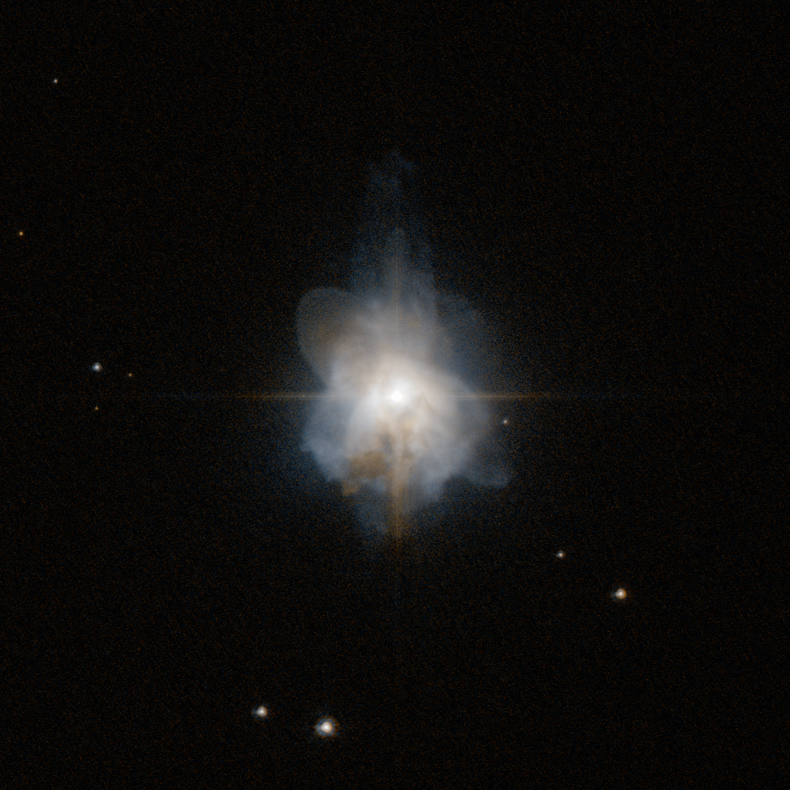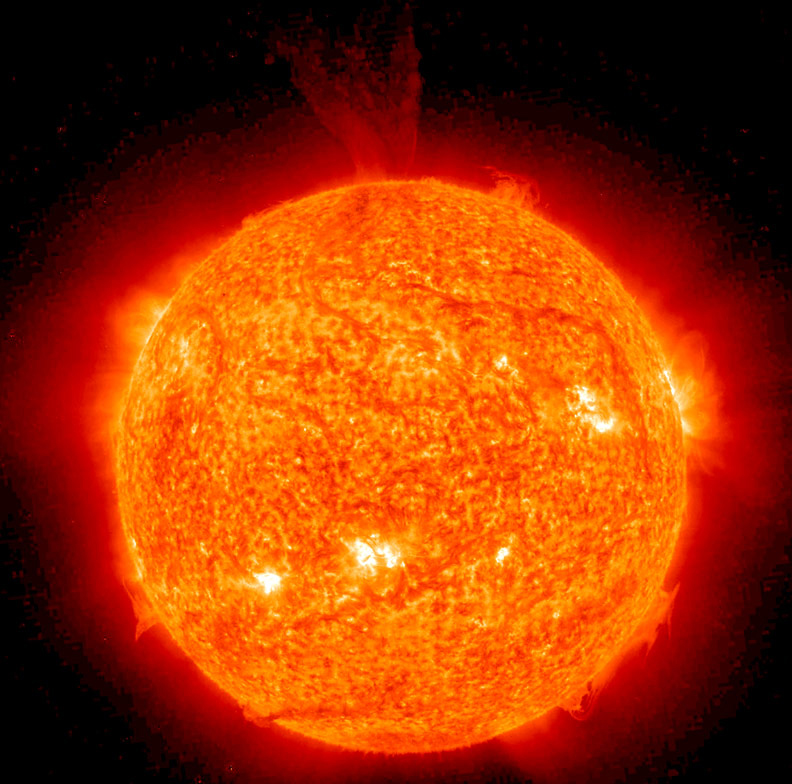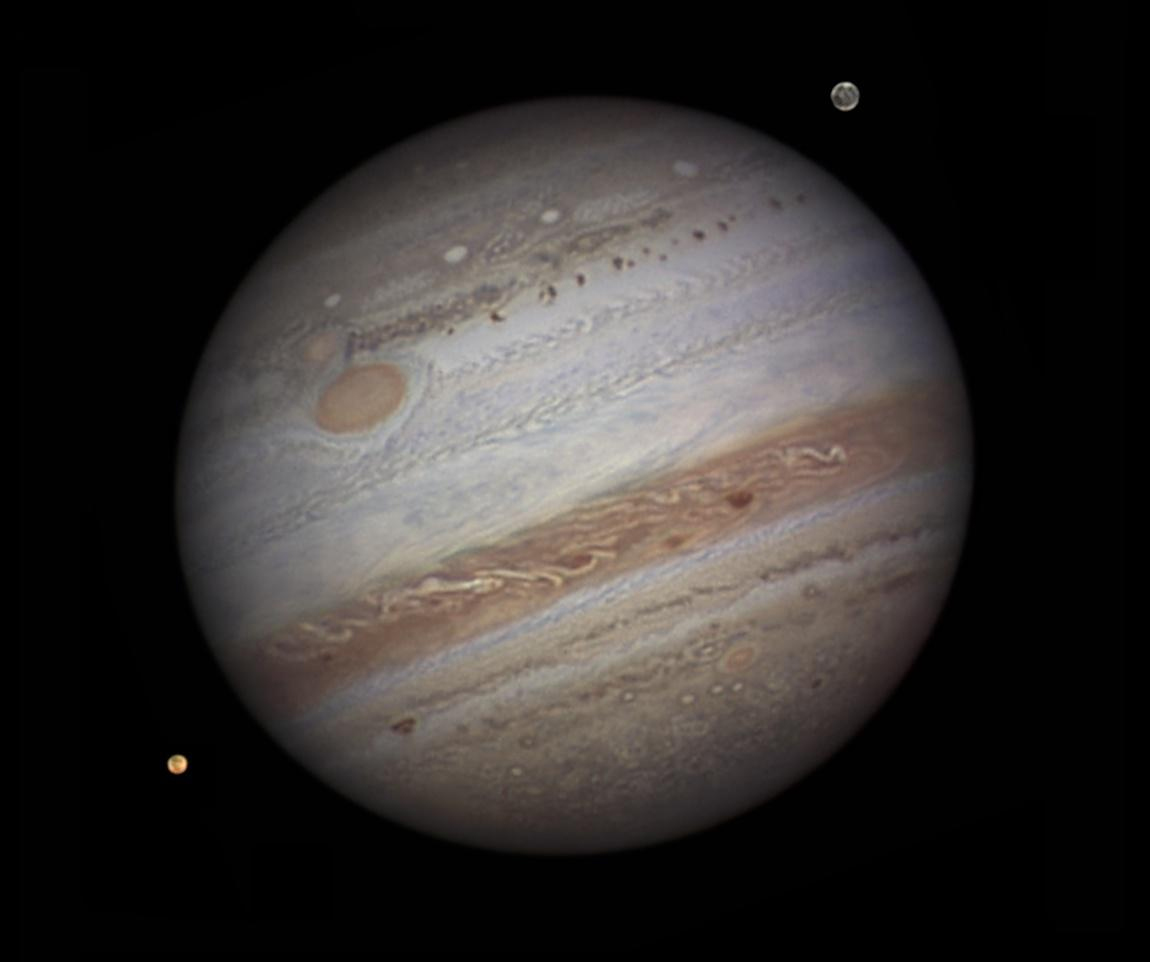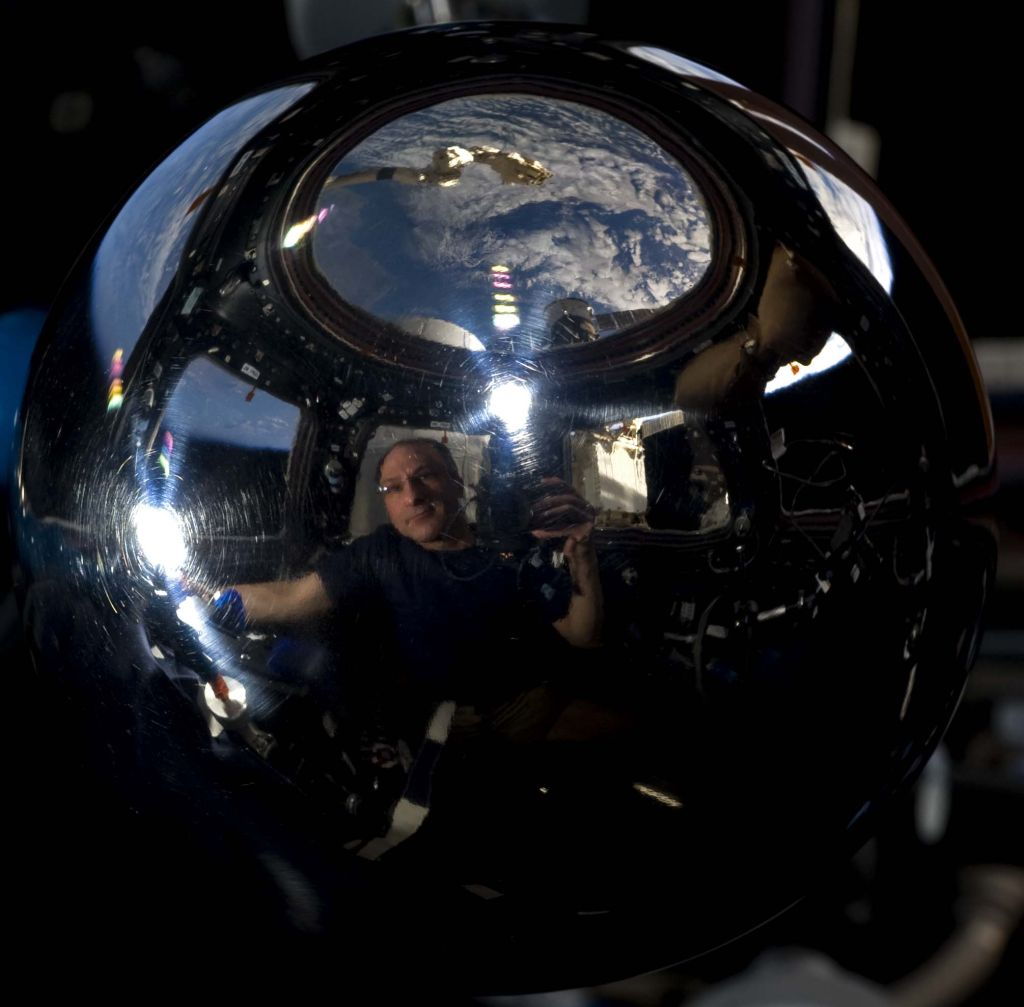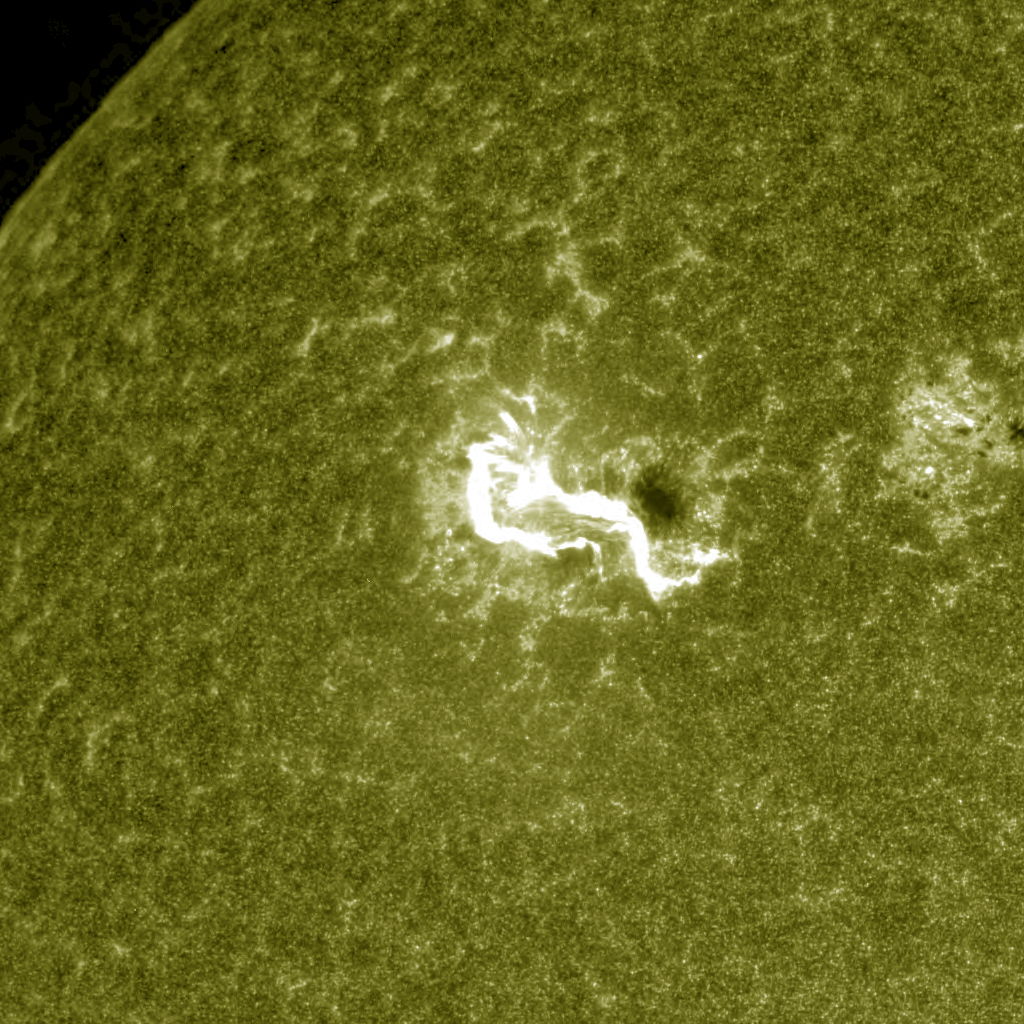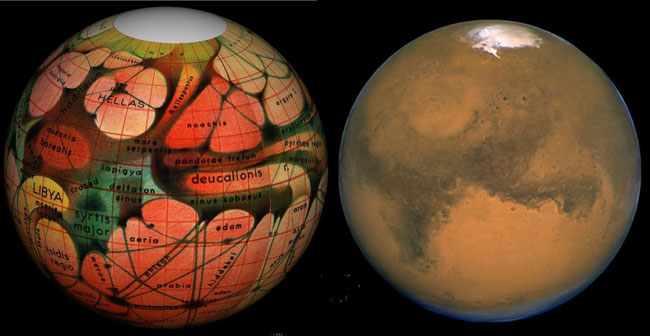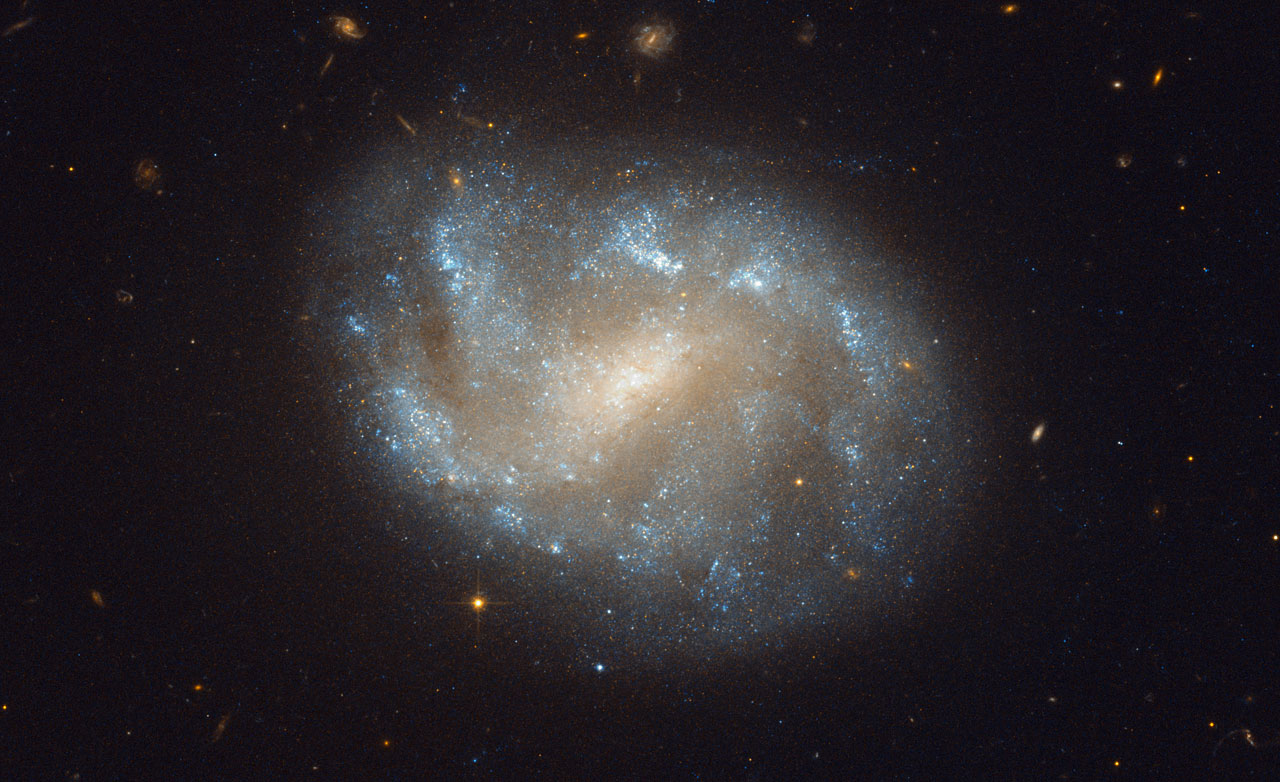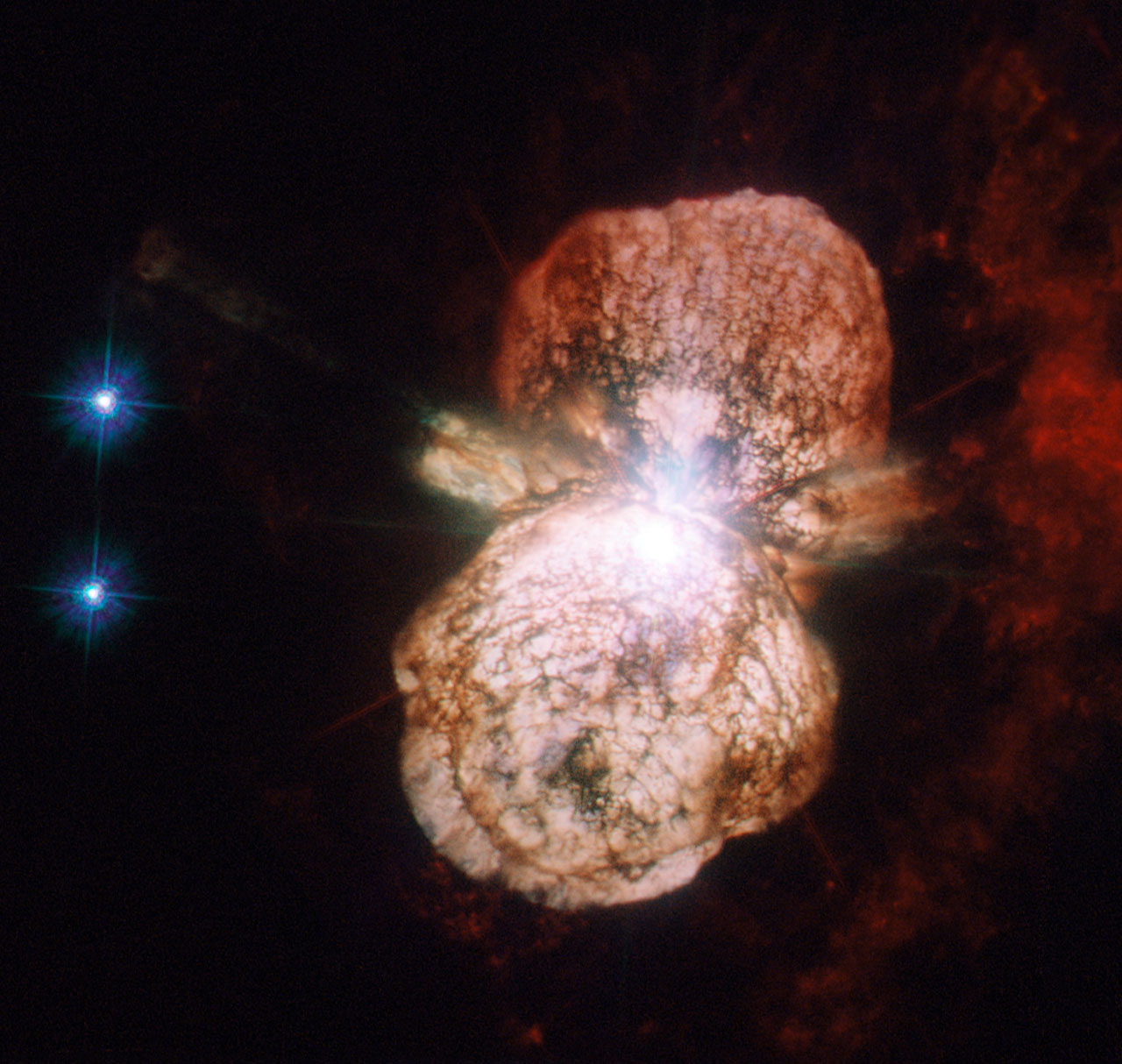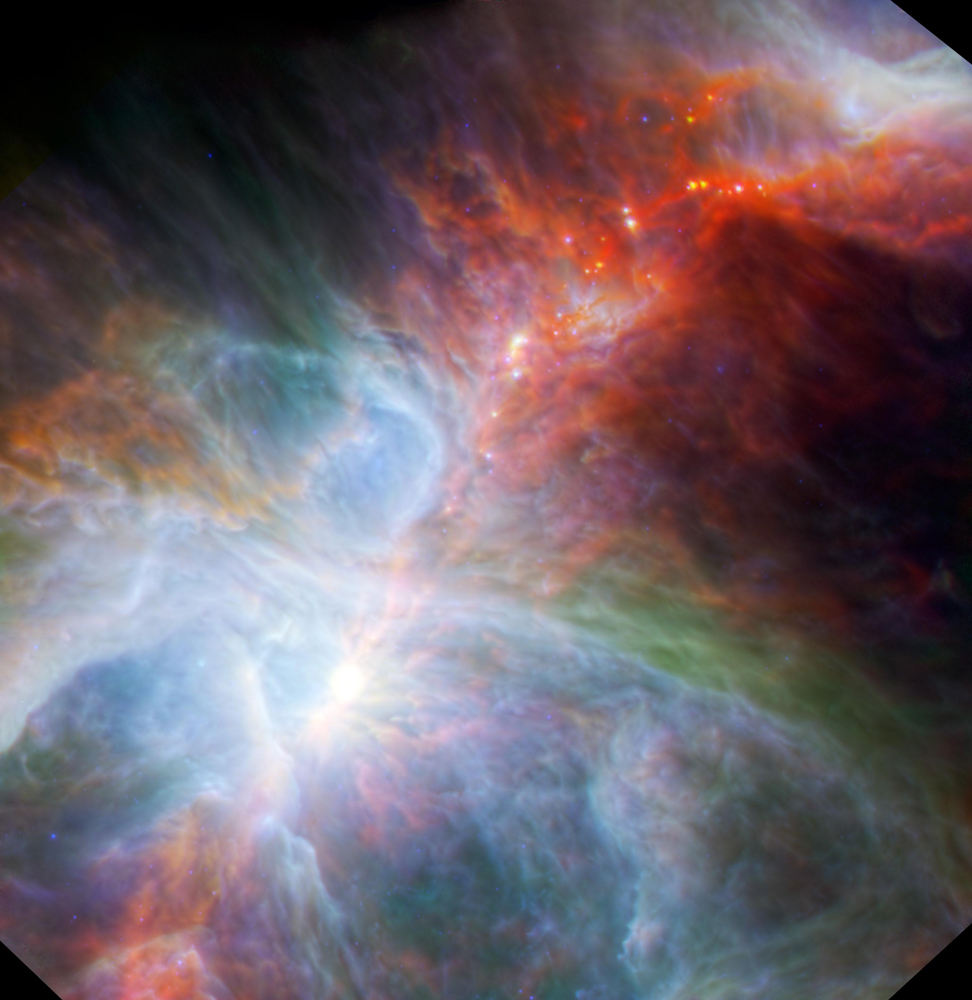Image of the Day: March 2012
This Is the Night of the Expanding Star
Thursday, March 1, 2012: Hen 3-1333 represents a planetary nebula, the dying throes of a mid-sized star as its outer layers expand into large, irregular globes of gas. (Planetary nebula were misnamed by the original discoverers, who though the outer layers were planets.) Hen 3-1333’s central star is thought to have a mass of around 60% that of the Sun, with variable brightness that might be caused by a disc of dust that appears almost edge-on from Earth. Astronomers class Hen 3-3333 as a Wolf-Rayet type star, as it is not large enough to count as a full Wolf-Rayet star.
— Tom Chao
Cutting the Thread
Friday, March 2, 2012: An elongated solar filament lies near the edge of the upper right of the sun's edge in this photo (from roughly 12 o'clock to 3 o'clock). Part of the filament near the north pole erupted on Feb. 19, 2012, as seen by the STEREO (Ahead) spacecraft in extreme UV light. Solar filaments consist of clouds of gases cooler than their surroundings that float above the sun's surface, suspended by magnetic forces. Filaments commonly erupt and disappear into space. In this case, the majority of this filament (to the right) did not fly up off the sun during the eruption.
— Tom Chao
Don't Bother with the Local Group
Monday, March 5, 2012: Antlia Dwarf Galaxy lies more than four million light-years from Earth. Researchers only discovered the faint, small galaxy in 1997. Antlia Dwarf dynamically features stars at many different stages of evolution, from young to old. No one can tell yet whether the Antlia Dwarf possesses membership in our galactic neighbourhood, called the Local Group.
— Tom Chao
Upside Down, You're Turning Me
Tuesday, March 6, 2012: Amateur astronomer Damian Peach obtained this image of Jupiter with its moons Io and Ganymede on Sept. 12, 2010, when Jupiter was close to opposition. South is up. The "Great Red Spot" is visible in the image. Skywatchers have a great opportunity to see Jupiter and Venus close together now, moving to their closest positions March 12-13, 2012. [See our full article about the conjunction.]
— Tom Chao
Sitting on Top of the World
Wednesday, March 7, 2012: Astronaut Don Pettit tweeted this picture from the International Space Station, Feb. 26, 2012. On Google+ he wrote: “Self portrait in the Space Station cupola. Those are clouds over the ocean on Earth out the window.”
— Tom Chao
Ribbons
Thursday, March 8, 2012: NASA's SDO spacecraft caught this image of another X-class solar flare on March 7, 2012. SDO researchers reported on their website: "At 00:28 UTC this morning we saw another X-class flare from active region 11429." This picture shows the two ribbons of this X5.4 flare.
— Tom Chao
Barsoom, I Presume?
Friday, March 9, 2012: Disney's "John Carter" motion picture opens today, inspired by a series of books by Edgar Rice Burroughs. The author was influenced by early renderings of Mars (called Barsoom by its inhabitants), which were later shown to be inaccurate. But they spawned some exciting reading! Left: This 1894 map of Mars was prepared by Eugene Antoniadi and redrawn by Lowell Hess. Right: A Hubble Space Telescope photo of Mars shows the modern view of our neighboring planet.
— Tom Chao
Breaking space news, the latest updates on rocket launches, skywatching events and more!
I Watch My Dolphinfish Swim Away
Monday, March 12, 2012: NGC 1483, a barred spiral galaxy, lies in the southern constellation of Dorado — the dolphinfish in Spanish. The constellation Dorado hosts the Dorado Group of galaxies, a loose group comprising about 70 galaxies and located around 62 million light-years away.
— Tom Chao
Tick-a-tick-a Time Bomb
Tuesday, March 13, 2012: The larger of the two stars in the Eta Carinae binary system is a huge and unstable star that is nearing the end of its life. 150 years ago, it emitted huge clouds of matter in a distinctive dumbbell shape, known as the Homunculus Nebula. Eta Carinae is one of the closest stars to Earth that will explode in a supernova in the relatively near future (roughly the next million years).
— Tom Chao
I Want a NuSTAR
Wednesday, March 14, 2012: At Vandenberg Air Force Base in California, an Orbital Sciences Pegasus XL rocket rolls into the sunlight. The rocket carries NASA's Nuclear Spectroscopic Telescope Array, or NuSTAR. The high-energy X-ray telescope will conduct a census of black holes, map radioactive material in young supernovae remnants, and study the origins of cosmic rays and the extreme physics around collapsed stars. A carrier aircraft will launch NuSTAR from the Kwajalein Atoll in the Pacific Ocean on a revised launch date to be determined.
— Tom Chao
I Want Some New Stars
Thursday, March 15, 2012: NASA's Spitzer Space Telescope and the European Space Agency's Herschel mission provides a new view of Orion Nebula. The infrared observations of both spacecraft combine to show fledgling stars hidden in the gas and clouds. Image released on Feb. 29, 2012.
— Tom Chao
Join our Space Forums to keep talking space on the latest missions, night sky and more! And if you have a news tip, correction or comment, let us know at: community@space.com.

Space.com is the premier source of space exploration, innovation and astronomy news, chronicling (and celebrating) humanity's ongoing expansion across the final frontier. Originally founded in 1999, Space.com is, and always has been, the passion of writers and editors who are space fans and also trained journalists. Our current news team consists of Editor-in-Chief Tariq Malik; Editor Hanneke Weitering, Senior Space Writer Mike Wall; Senior Writer Meghan Bartels; Senior Writer Chelsea Gohd, Senior Writer Tereza Pultarova and Staff Writer Alexander Cox, focusing on e-commerce. Senior Producer Steve Spaleta oversees our space videos, with Diana Whitcroft as our Social Media Editor.
